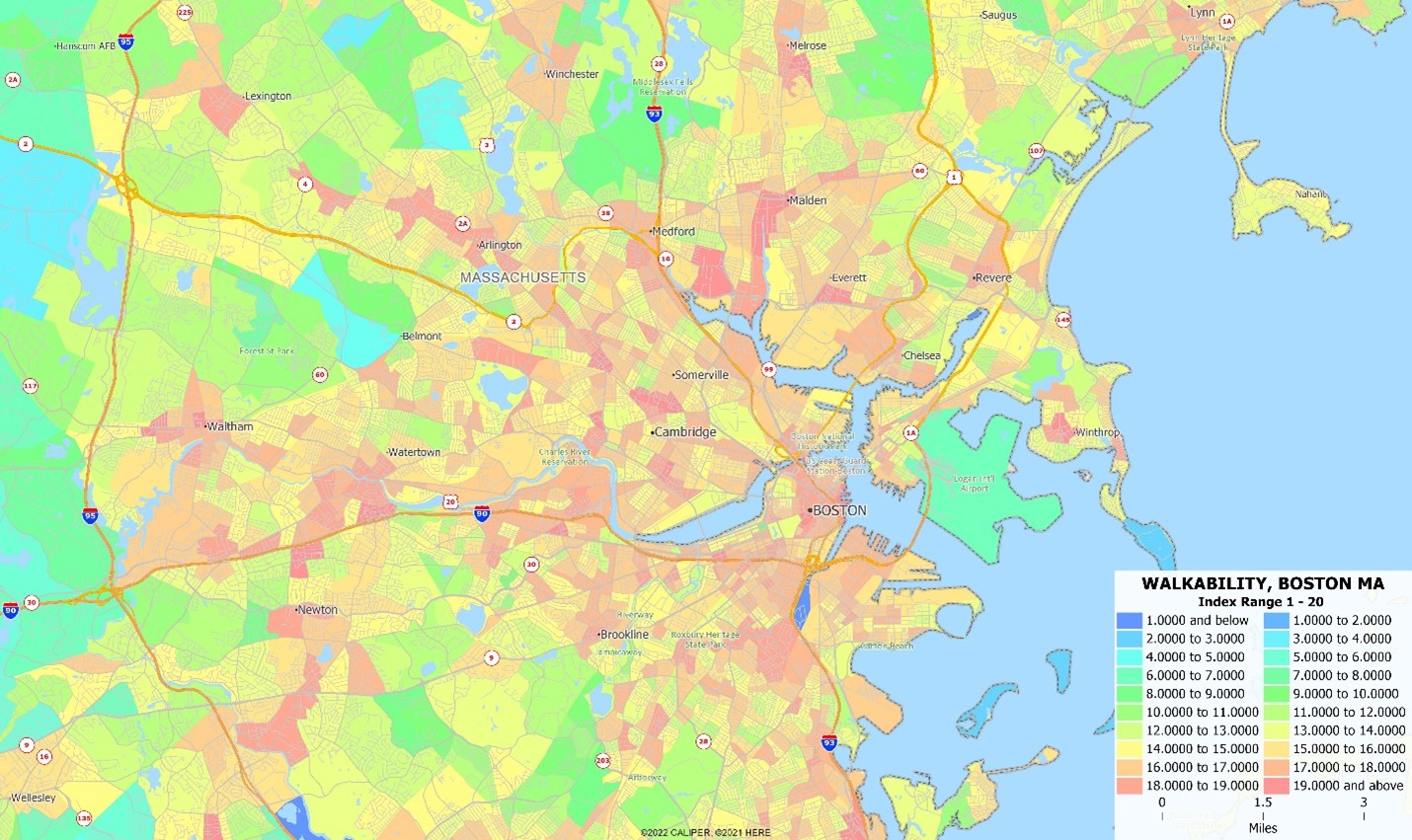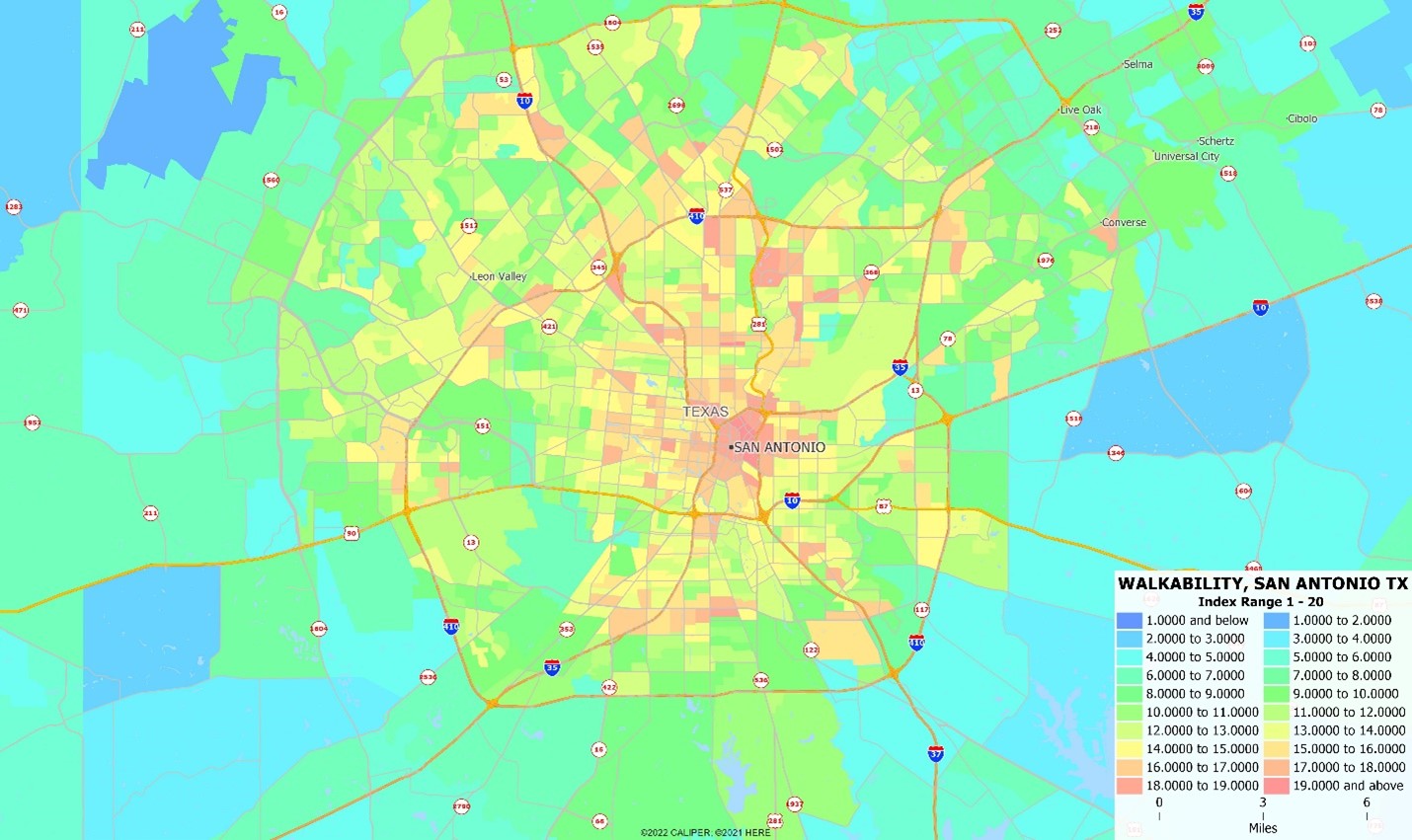For those of us trying to save a few dollars on gas money, looking to help the environment or even just looking for physical activity, you might be tempted to walk to the store, or at least take public transportation, instead of driving your car. But, depending on where you live, that might not be a realistic expectation. So, how walkable is your city? This is a sneak peek into a small portion of our latest release coming this fall as we recreate our Quality of Life database.
But how can we decide the walkability of a city? This is based on three main criteria:
- Street intersection density
- Proximity to public transit stops
- Employment and household mix
The index favors densely developed areas which are well served by public transit and offer both places to work and places to live in close proximity. The three components are equally weighted on the EPA’s National Walkability Index, and the scores are based on rank ordered block groups.
We looked at large cities, those with over 100,000 in total population, and were a little surprised by some of the results. Scores over 15.25 are considered most walkable, and the index ranges from 1 to 20. Below are the top 10 most walkable, and the bottom 10 least walkable.
| MOST WALKABLE | LEAST WALKABLE | |||||
| Rank | Name | Walkability | Rank | Name | Walkability | |
| 1 | Berkeley, CA | 16.5 | 1 | Surprise, AZ | 5.3 | |
| 2 | Cambridge, MA | 15.6 | 2 | Columbus, GA | 5.2 | |
| 3 | Providence, RI | 15.6 | 3 | Augusta, GA | 5.2 | |
| 4 | Allentown, PA | 15.6 | 4 | Las Cruces,NM | 5.1 | |
| 5 | Seattle,WA | 15.0 | 5 | Billings, MT | 5.1 | |
| 6 | Minneapolis, MN | 14.8 | 6 | Boise City,ID | 4.9 | |
| 7 | Miami, FL | 14.8 | 7 | St. George, UT | 3.8 | |
| 8 | Hialeah, FL | 14.7 | 8 | Anchorage, AK | 3.6 | |
| 9 | Alexandria, VA | 14.7 | 9 | San Tan Valley (CDP), AZ | 3.6 | |
| 10 | Paterson, NJ | 14.5 | 10 | Enterprise (CDP), NV | 3.5 | |
Notably missing from this list, Chicago sits at 14.0, Boston at 13.7, New York, NY at 13.5 and Los Angeles at 12.1.
However, most surprising is San Francisco – which most of us would find highly walkable – comes in at 8.5 – why? When we compare it to Los Angeles, which most people think is unwalkable but rates higher, why does it come in so low? San Francisco has a geographically concentrated employment profile, while LA has a very dispersed pattern of business locations, meaning that in San Francisco, you may live a great distance from work, where in LA, you can live closer to your workplace as those are spread out. While San Francisco has great public transportation, the measurement is not how long it takes to get to work on the bus how close you are to the nearest transit stop.
The maps below show the walkability of Boston, Massachusetts and San Antonio, Texas


While walkability is a piece of the puzzle, we note that it doesn’t consider other things, like crime or climate. Do you really want to walk to work in Minneapolis in January? What about the risk of crime? East Los Angeles scores very high on the list (rank #14) but walking isn’t necessarily the best idea.


Recent Comments